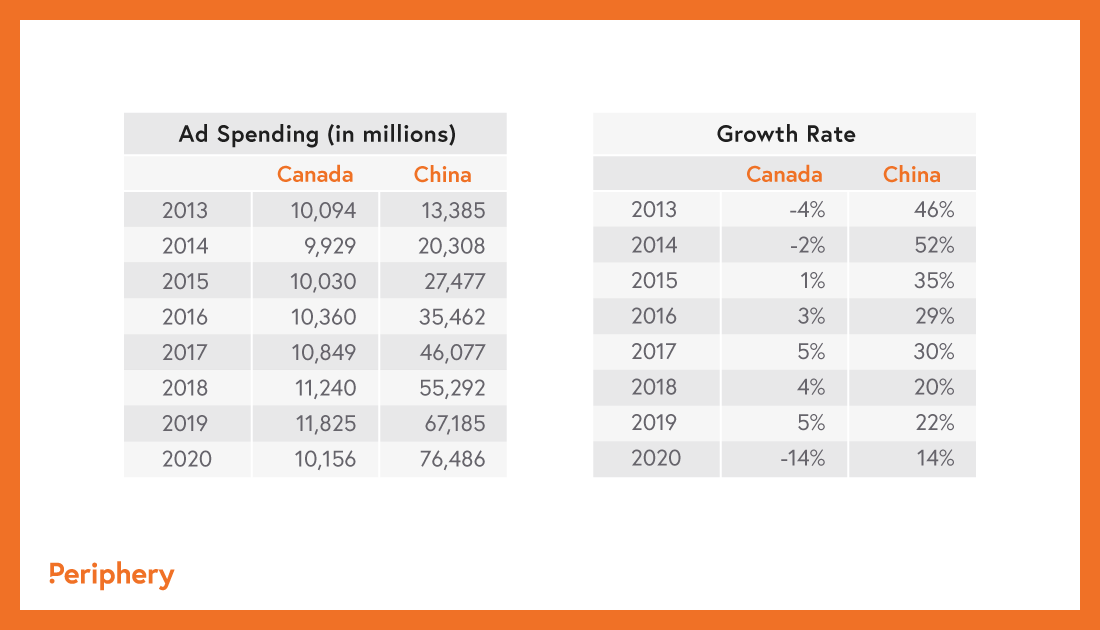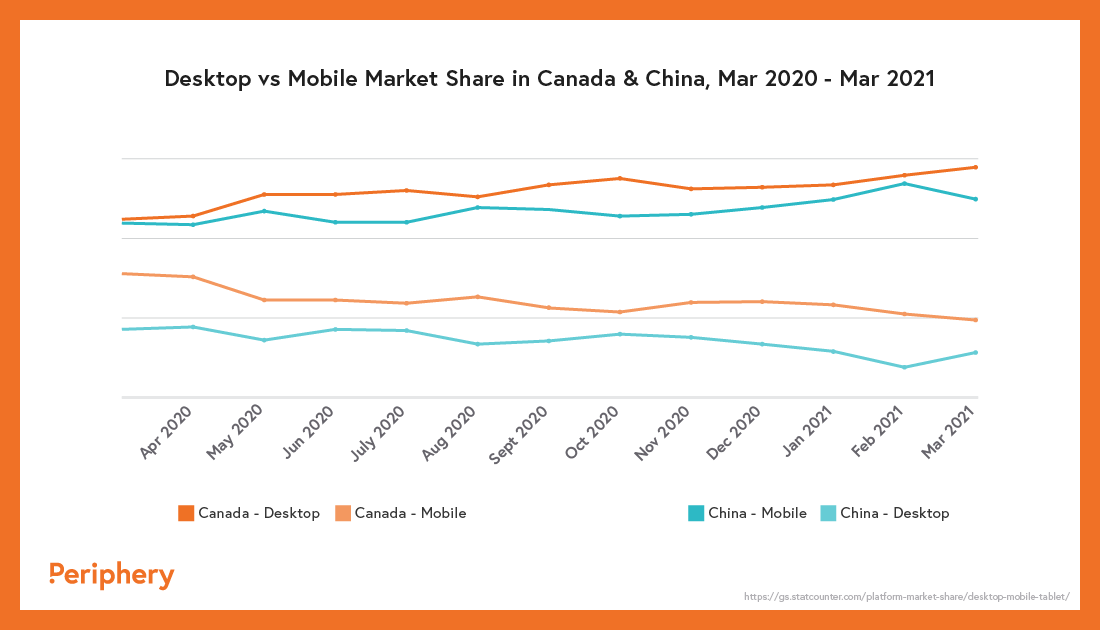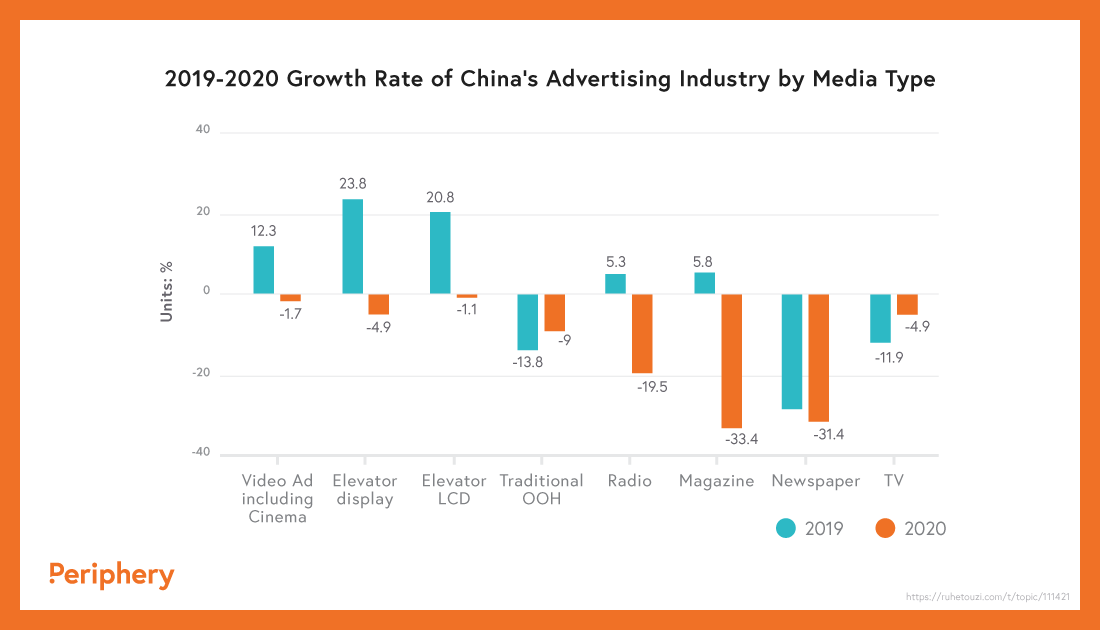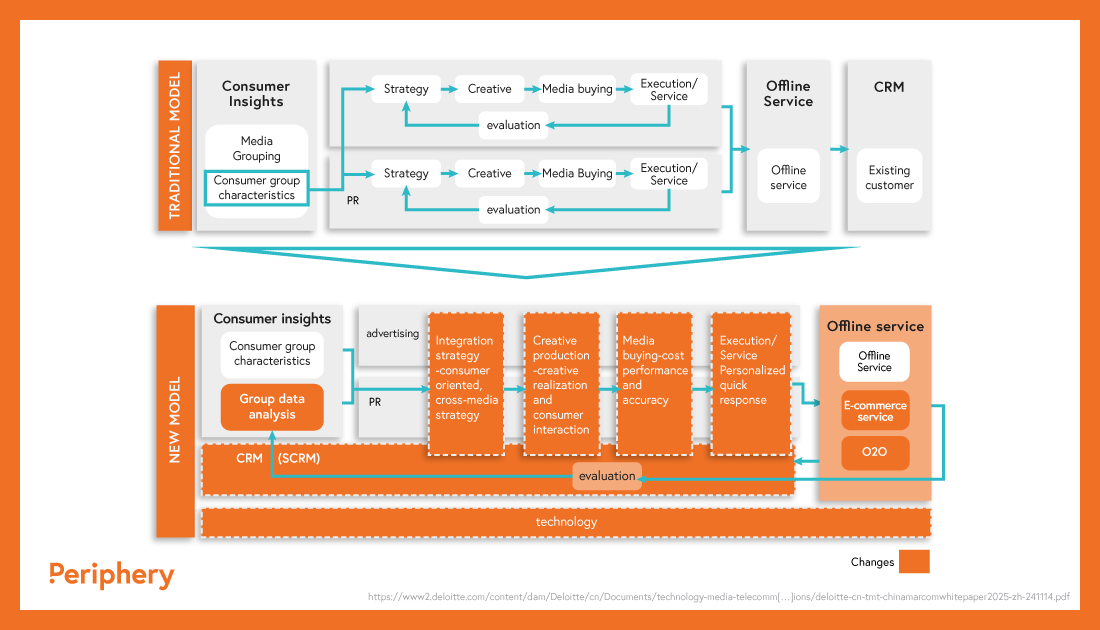It goes without saying behaviours and attitudes are shifting across the globe as a direct result of the COVID-19 pandemic.
We’re bombarded with advertisements wherever we go. The last year had us not going much of anywhere, and as a result, global advertising and media trends are following suit. Advertising spend has and continues to be redistributed to channels where audiences are likely to spend their time.
A lot of strategy goes into advertising placements. Marketing these days is about meeting your audience where they are. You need to ensure our ads are seen by the right people at the right time to maximize ROI for the amount you spend on buying media placements. Basing decisions on concrete data and trends in the market is a smart way to keep with the times to reach your target audience.
As many people remain working and exercising from home, it’s important to consider the causal behaviours that result from this trend and how your marketing strategy will be affected. For example, with people waking up later in the day and not commuting to work, radio advertising placements for peak hours likely won’t be heard as often, and therefore may not be worth your money.
In this article, we’ll examine how the last year’s behaviour and lifestyle changes have affected advertising spend in Canada and China, along with the trends that are following suit.
Advertising Trends in Canada & China
When buying media placements for our clients that are sure to be seen and resonate with Chinese consumers, it’s important to have an accurate understanding of the current and trending market. We’ll examine 5 trends we’ve seen in Canada and China, and their impacts on the media industry.
1. Ad Spend
Prior to the pandemic, Canada had a stable and increasing growth rate of advertising spend year over year. Many reports projected an upward trajectory in spending for the coming years. But 2020 had other plans.
Overall advertising spend in Canada last year dropped from 11.8 billion to 10.1 billion, a shocking -14% decline.

Conversely, China’s advertising spend grew in 2020. China’s economy was the only country in the world to have grown economically last year, albeit at the slowest pace in more than four decades. Although less than in previous years, revenue from advertising increased 14% from 67.2 billion to 76.5B. It is assumed a very strict initial lockdown period contributed to the lack of economic downturn and assisted with the quick rebound.

2. Device Type
Given the landscape and lifestyle changes, preferred device type has also changed over the last year.
In March of 2020 in Canada, both desktop and mobile had almost the same market share, with desktop taking over 51%, and mobile at 42%. Beginning in April of last year, desktop use has slowly increased to nearly 59% in March 2021, while mobile has dropped to 35%. That’s a 16% change in just one year!
This again accurately reflects the sentiment of people staying home and not going out in public as frequently where portable devices are used to read the news and listen to music while commuting to work.
Interestingly in China, the mobile and desktop market share is the complete opposite of that in Canada. In March 2020, nearly 60% of device market share is taken up by mobile, which only increased over the year to peak at over 65% in February of 2021 while desktop share fell to just 33%.

Unlike Canada, China didn’t follow the same technology advancement trajectory of desktop, to laptop, to smartphone and instead went straight to smartphone, which explains the cutting-edge smartphone hardware and widespread usage of technologies such as QR codes. QR code popularity can be attributed to the success of ‘everything’ app WeChat — the biggest social network in China and the 6th most popular social network in the entire world. It’s a mobile-first platform with 1.2 billion users — over 15% of the global population.
3. Content Consumption Habits
It’s important to keep tabs on your target audience’s preferred content consumption mediums when constructing your marketing strategy and consider how these might change based on current events.

As seen on the chart, print, audio, out-of-home, and audio advertising spend has reduced dramatically in Canada in 2020, while digital spend has slightly increased. This can be attributed to the increase in time spent at home.
Many businesses have pivoted their strategies to match their target audience’s lifestyle. For example, it makes sense to reduce or completely eliminate skytrain station ad placements if your target audience is a working professional, understanding they are likely working from home and therefore invest this money in digital placements instead.

This is where Canada and China are aligned. In China, newspaper and magazine revenue has decreased by one-third, while out-of-home has decreased by 9%.
4. The Rise of New Media
Concentration of media ownership has been a hot topic for a few years now as mergers and acquisitions ramp up across the world, controlling a large portion of media communications and pushing out the little guys. In Canada, 6 companies own the majority of media outlets: Bell, Corus, Rogers, Quebecor, and CBC.
Digital advertising is becoming increasingly concentrated with 80% of market share owned by Google and Facebook, which is up from 68% just four years ago. In China, share of digital ad spending by ad platform is owned by Alibaba (30% share), ByteDance, Baidu, Tencent, and Weibo.
As one can imagine, this issue can only be worse in China with the absence of mass social media players like Facebook, Instagram, and Google and heavily regulated replacements. However, there is a rise in new and creative methods of advertising:
- KOLs (key opinion leaders), which are similar to influencers here in North America. These can be classified as self-media where personalities have their own talk shows on platforms like WeChat and Miaopai
- Pengpai (The Paper) owned by Shanghai United Media Group is an online, private news source that appeals to a younger crowd who are critical of traditional, state-owned papers. The Paper draws 20 million views per day.
- Some journalists and editors of this publication resigned to create their own video-based news platform called Pear Video — it will be interesting to see what comes of this!
- The influence of Chinese media platforms on Western media — for example, the surge in popularity of social network TikTok, called Douyin in China, is owned by Chinese technology company ByteDance. Superapps that carry out multiple functions such as WeChat are popular and widely accepted in China due to convenience, and the sentiment is spreading to the West. We can see this happening with Facebook and its integration of a shopping platform with Marketplace, job board, and even a way to meet a partner with their in-app dating platform!
5. Advertising Agency “One-Stop-Shops”
Traditionally, companies that need marketing services contract out each individual service to a number of specialized agencies. Although they may believe they’re getting the best of the best by choosing ‘specialists’ versus a one-stop-shop, things can quickly get complicated, and messaging can appear fragmented, not to mention evaluation of results metrics is all over the place. We’ll dive into some reasons why more and more companies are choosing one-stop-shops:
Improved Communication
Managing multiple lines of communication can get time-consuming and complicated. The average office worker receives 121 emails per day. It’s understandable that things can get missed as you have more to do in your day than just read emails. Having the same conversations over and over with multiple vendors just isn’t efficient.
Conducting integrated marketing campaigns typically involves many moving parts which represent one, cohesive message across channels. If each initiative is run by a different agency, messaging can appear fragmented and inconsistent.
Lately, more and more businesses are seeing the value in choosing agencies that handle their end-to-end marketing and media initiatives. This involves all processes from beginning to end: consultations, forming strategies and projections, creating all content and design, execution of said strategies, and collection of data for reporting to optimize and do it all over again.

This has a number of benefits:
- Efficiency: A single, direct line of communication lets you focus on your business and less on repeating yourself. Agencies these days are filled with their own specialists to make sure you are, in fact, getting the best of the best.
- Lower cost: often one-stop-shop agencies will offer a discount the more services you contract to them
- Streamlined messaging: Messaging will appear fluent and cohesive if processes are handled by a single source.
Agencies as Partners vs Passive Execution
Previously, companies hired marketing agencies to execute initiatives they wanted to implement based on what they’d seen and heard in the industry, what their competitors were doing, etc with limited knowledge of the landscape. They did not have the time or resources to carry out these activities themselves and therefore hired an agency to do things based on their directions.
We’re seeing a trend both in China and Canada where agencies act as business partners rather than passively executing requests. The end consumer and their wants and needs are the priority rather than the client themselves. Business intelligence systems are used to draw consumer behaviour insights to predict outcomes, helping determine future activities and their likelihood of success. This in turn helps with the allocation of marketing budgets and resources to occupy the market prior to competitors.
Data Transparency at All Stages
Traditionally, marketing agencies only had their hands in one small piece of the pie that is the overall business, its operations, and its historical and current marketing activities. How is an agency supposed to iterate on marketing activities if they aren’t sure which channel the leads can be attributed? As you can imagine, it’s extremely difficult to create a comprehensive and effective marketing strategy if you don’t have a bird’s eye view of the entire picture.

As they are more so acting as partners as explained in the previous point, marketing agencies are ever-increasingly being given access to their clients’ operations and financial data and the CRM (customer relationship management software). This has all data of leads, their stage in the pipeline, and where they came from to help inform future marketing decisions.
As marketing activities directly impact the bottom line of a business and are based on a consumer-centric model, it’s critical to understand each stage of the buyer’s journey to determine friction points, fix them, and deliver an even better customer experience at all stages.
As the client’s sales are dependent on the success of the agency’s marketing activities, oftentimes an agency’s pay is directly correlated with the client’s sales revenue. This is a very popular tactic in China, especially in e-commerce businesses.
An All-in-One Solution
At Periphery Digital, we’re experts in handling our clients’ end-to-end marketing and media initiatives, keeping a close eye on advertising and media trends to provide our clients with the best service possible. Our results and happy clients speak for themselves — check out our work to learn more about our capabilities.
We’d love to hear from you — contact us to discover how we can help your organization achieve your marketing goals and grow your business.


